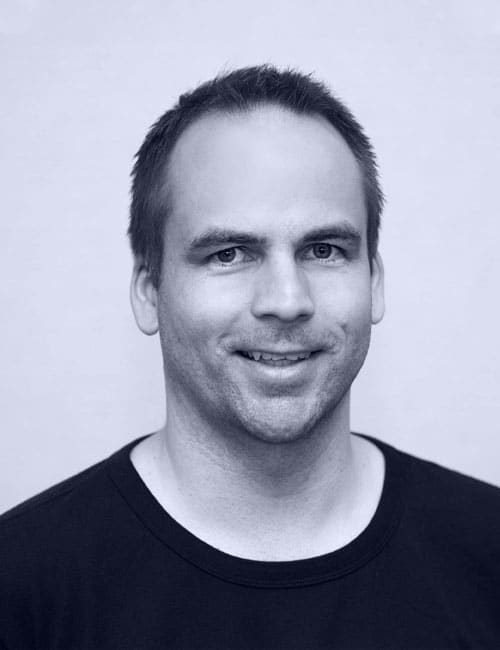In case you missed it, here is a list of the conference sessions and link to their talk.

Paul Dix
Founder and CTO, InfluxData
@pauldix
InfluxDays Opening Keynote
In this session, Paul Dix will open the conference with an update on InfluxDB and Flux.

James Governor
Principal Analyst & Co-Founder of Redmonk
Reframing and Retooling for Observability
Observability is making the transition from being a niche concern to becoming a new frontier for user experience, systems, IoT and service management across all organizations. James will discuss what this means for the developers of modern applications and how to use observability to derive deep insights into system performance and user experience.
About James Governor: James Governor founded RedMonk in 2002 with Stephen O’Grady. RedMonk focuses on developers as the real key influencers in tech — understanding that people choose technology because of gut instincts not facts per se. An ex-journalist, James has managed teams and news agendas in weekly publication grind. He has been an IBM and MS watcher since 1995. His goals: build RedMonk. His specialties: Developers, developers, developers.

Product Owner; DevOps Enablement, Volvo
History of Monitoring at Volvo Cars
In this session, Daniel and Maksim from Volvo share their experiences using InfluxDB to build a monitoring ecosystem.
About Daniel Putz: Daniel Putz is the “DevOps Enablement” Product Owner at Volvo Cars. He is responsible for helping to accelerate Volvo’s move to become a product-centric organization where every product is responsible for both Development and Operations. His efforts provide the toolchain and support capabilities, such as test and monitoring ecosystems, to the enterprise. Daniel holds a Master in Computer Science and a Bachelor of Science in Media Technology.
In his free time, Daniel enjoys good wine, classic cars, and a multitude of sports.

Engineer, Volvo
About Maksim Puzykov: Maksim has almost 20 years of experience in the IT field. During his career, he worked with a broad range of technologies. Now his professional interests lie within Enterprise Management and Monitoring solutions. Maksim works as an Engineer at Volvo with the DevOps Enablement product; the team adopts an agile way of working. He was responsible for the development of Volvo’s monitoring approach over the years and contributed to a number of transformations and platform changes based on growing company needs. Recently, Maksim has been working with integration of InfluxDB and other solutions in the monitoring platform.

Head of Applications, InfluxData
Best Practices for Data Ingestion into InfluxDB
There are many ways to get your time series data into InfluxDB. You can use Telegraf plugins, a client API, or use Flux to upload your data. This talk will cover the pros and cons of each approach. We will then dive into Telegraf (our most flexible approach to loading data into InfluxDB, supporting over 200 plugins today). We will show you some great examples of how our customers are using Telegraf to retrieve, process and output time series data. If you are relatively new to Telegraf, you will come away with a better understanding of how to leverage Telegraf in your environment to seamlessly upload your data to InfluxDB. If you’ve been using Telegraf for a while, you may discover some new Telegraf capabilities that you weren’t aware of. You may even get inspired to contribute to Telegraf to make it even better.
About Barbara Nelson: At InfluxData, Barbara manages the Telegraf team as well as the teams delivering the InfluxDB UI for the company’s open source and commercial products.

VP of Products, InfluxData
InfluxDB Roadmap
In this talk, Tim will review the roadmap and will cover what you can expect in the future in terms of InfluxDB and Flux capabilities.

Ryan McKinley
VP of Innovation, Grafana Labs
Grafana and InfluxDB
In this session, Ryan will preview the new capabilities supporting InfluxDB.

Jeremy Foran
Technology Specialist – CoE Data, BAI Communications
Detecting Subway Overcrowding in Real Time Using InfluxDB
BAI Communications has built a public Wi-Fi offering in both the Toronto and NYC subway systems, where roughly 2 million unique devices totaling 14 million log-ins per month use the service. Using InfluxDB, the company can notify rail operators when platforms reach dangerous levels in near real-time.
The team has been using InfluxDB since v0.8 and love the tech. To deliver this solution, they collect metrics from the 1000+ wireless APs in their network and push them into InfluxDB. Passenger flows create various distinct patterns in the Wi-Fi data. Using InfluxDB, the team can tease out patterns and notify appropriate parties when those patterns change.

Tech Lead User Tools Team, InfluxData
Zero to Awesome Infrastructure with InfluxDB Templates
InfluxDB should be easy to get up and running with all the shiny resources you need to get value out of it. This talk will walk users through creating an influx template/package that can stand up resources like buckets/labels/tasks/telegraf configs and so forth so they can start up their cloud or OSS instance and hit the ground running!
About Johnny Steenbergen: Solving problems to advance user activation. Community engagement is what Johnny lives for.

Brandon Farmer
Senior Engineer, InfluxData
Tools for Working with Flux Now and in the Future
Walkthrough of the Flux tools that we have available today and the roadmap of what is coming in the future.
About Brandon Farmer: Senior Engineer at InfluxData working on the new tools for Flux.

Solutions Architect, Google Cloud
IoT Event Processing and Analytics with InfluxDB in Google Cloud
The presentation introduces a Google Cloud native architecture for collecting, processing, analyzing and archiving of events from IoT devices, vehicles as well as upstream software systems. InfluxDB and its connection to global native Google Cloud services like BigQuery or Cloud Machine Learning Engine as well as Kubernetes is at the center of the architecture. The architecture demonstrates how access to global scaling cloud services address use cases from the Energy Sector.
About Christoph Bussler: Chris was always fascinated by systems and data integration between on-premises systems, clouds, and their combination. As a Solutions Architect at Google Cloud (Google, Inc.) he is focusing on databases, data migration, and data integration in enterprise customer settings. Earlier in his career, Chris contributed to Enterprise Application System Integration (EAI), Business-to-Business Integration (B2B) as well as workflow management. In addition to implementing these technologies, he wrote several books on these topics and is publishing actively (see his professional page at www.real-programmer.com).

Developer Advocate, InfluxData
Git Lost in Time Series
Time Series is everywhere. It is all around us. Even now, in this very room. It’s there when you look out your window, or when you turn on your television. It’s there when you go to work, when you go to church, when you pay your taxes.
We often get so caught up in monitoring metrics from our EC2 instances, microservices, and service meshes that we forget that there’s plenty of time series before our code ever leaves our laptops: The Git repository.
In this session, we’ll walk through extracting time series data from Git, storing it in InfluxDB Cloud, and building an understanding of our codebase, team, and commit habits.

Partner & Head of Industry 4.0, Nortal
Role of Time Series Historian in Industry 4.0
The road to your digitalization journey and the Fourth Industrial Revolution is paved with data integrations. Data is needed when clarifying the big picture, aspiring for predictive maintenance, optimizing and de-bottlenecking processes, or implementing new systems (such as MES or APS). Themes like Industrial Internet of Things (IIoT) or Industry 4.0 are built on moving and combining data, making it accessible in real time. Without data silos, you have a complete, accurate and centralized view of your assets and their current state and health. The ability to visualize your asset performance and process efficiencies anytime and anywhere makes you agile and able to react quickly.

SRE, InfluxData
Istio at InfluxData
This talk covers how and why we are running Istio on Kubernetes at InfluxData. Buzzwords can’t substitute engineering. Our experience, roadmap, and challenges of using Istio without Prometheus and using telegraf-operator.

Technology Evangelist, Confluent
Real-Time Streaming Analytics with 100000 Cars using MQTT, Kafka and InfluxDB 2.0 on Kubernetes
This session discusses use cases and architectures to process and analyze IoT sensor data in real time at scale. Learn how to ingest, process and analyze sensor data with MQTT for connectivity, the Kafka ecosystem for event streaming and InfluxDB 2.0 for time series analytics. A live demo shows how to build a cloud native IoT infrastructure on Kubernetes to connect and process streaming data from 100000 cars to do predictive maintenance in real time.
About Kai Waehner: Kai Waehner works as Technology Evangelist at Confluent. Kai’s main area of expertise lies within the fields of Big Data Analytics, Machine Learning / Deep Learning, Messaging, Integration, Microservices, Stream Processing, Internet of Things and Blockchain. He is a regular speaker at international conferences such as JavaOne, O’Reilly Software Architecture or ApacheCon, writes articles for professional journals, and shares his experiences with new technologies on his blog.

Michael DeSa
Eng. Manager, InfluxData
Monitoring Methodologies
The objective of this workshop will be to introduce participants to the RED and USE monitoring methodologies. We will compare and contrast the two methodologies. Care will be taken to highlight best practices associated with each methodology. The workshop will culminate in participants designing schema and using flux to create relevant visualizations of their data.
About Michael DeSa: Michael DeSa is the Engineering Manager for the Monitoring Team at InfluxData. He has led the InfluxDB training course across the US, providing students with an in-depth understanding of how InfluxDB works as well as sharing best practices. He has a degree in Math from the University of California, at Berkeley.

Architect & DevOps/SRE and Time Series consultant, CérénIT
Sustain Your Observability from Bare Metal TICK Stack and Apps to a Kubernetes World
When moving your apps to Kubernetes, you need to keep your existing observability at the same level or better improve it. Kubernetes will give you some challenge as you can’t strictly deploy the TICK Stack as you did before but also some opportunities. The talk is about my journey on this topic and will cover Telegraf as daemonset to fetch nodes resources, as a deployment to fetch metrics from different endpoints and hopefully with Telegraf as an operator to illustrate sidecar deployment. All these metrics will be pushed to InfluxDB (v1/v2) and may be visualized in Chronograf or Grafana.
About Nicolas Steinmetz: Working for 15+ years in IT, Nicolas founded CérénIT four years ago to focus on architecture, automation and reliability to make platforms work as expected. Nicolas is a fan of DevOps/SRE culture and practices. Playing with the TICK Stack for 5+ years now, he is also the InfluxAce for France and has hosted the Paris Time Series Meetup since InfluxDays London 2019. Living in France, he also enjoys sailing on the west coast in his spare time.

Solutions Engineer, InfluxData
Performance Optimization in InfluxDB
Like his past talks on this, Sam will give a rundown of the different levers one can pull to make InfluxDB perform better for one’s use case. As he does each iteration of this, he has additional slides to add to this topic.
Most of the presentation focuses on write procedure as that is what defines schema and, ultimately, how queries will work against the DB.
Query tuning is an optional topic given enough time. It’s a complicated topic to cover, however.
About Sam Dillard: Sam Dillard has been a Solutions Engineer with InfluxData for over 3 years. He has watched the evolution of the product and its audience evolve since just before InfluxDB v1.0 was GA’ed. He has a lot of experience in understanding different use cases, workloads, dataset shapes, and optimizing InfluxDB’s performance given those vectors.

Technical Writer, InfluxData
Map & Reduce – The Powerhouses of Custom Flux Functions
Use the Flux `map` and `reduce` functions to create powerful custom Flux functions. Aggregate, calculate, extrapolate, and transform your data to gain valuable insights specific to your use case.

Shashi Raina
Partner Solution Architect, AWS
Build Modern Monitoring with InfluxDB and AWS
Infrastructure management and observability can be challenging in industries like financial services where uptime is of paramount importance. Learn how AWS and InfluxDB solutions overcome these challenges by delivering real-time visibility into systems to help quickly identify and mitigate potential outages. We’ll share real examples of how these solutions were implemented, providing better observability into infrastructure and transactions, and how these organizations were able to pass on these performance improvements to their customers as a result. Finally, this session will share how you can get started with a free trial of InfluxDB on AWS.
He works with startups that are building products in DevOps and Big Data space. He lives in New Jersey with his wife and 11-year-old twin boys.

Al Sargent
Senior Director of Product Marketing, InfluxData

Spyros Garyfallos
Senior ML Engineer, Microsoft
Deploy, Monitor and Manage Your High-Value AI Workloads to the Edge, Using Azure IoT Edge and InfluxData
Learn how to deploy, monitor and manage high-value AI to on-premises edge devices, powered by a marketplace quick-start experience.
The capabilities unlocked by combining Azure IoT Edge and InfluxData allow the seamless deployment, management and monitoring of high-value AI/ML workloads to the Edge, capabilities so far limited only to cloud environments.
This session presents an overview of these new capabilities of the Azure IoT Edge and InfluxData synergy.
